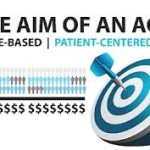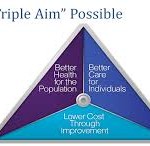BHM Wishes You a Happy Labor Day!
BHM Healthcare Solutions would like to wish all of you a Happy and Safe Labor Day!
Home » Archives for BHM Marketing » Page 25
BHM Healthcare Solutions would like to wish all of you a Happy and Safe Labor Day!

While many have been quick to defend the slow rise of Accountable Care Organizations (ACOs), many others are looking not at the slowness of the climb, but the inconsistency.
Circling back to the entire point of ACO formation in the U.S. there were two distinct motivations:
1) the care previously provided by independent physicians was more often than not uncoordinated and
2) the fee-for-service payment model was inefficient and made the incentive for physicians providing more care not necessarily good care.

One of the many ways in which healthcare organizations are assessed these days is both internal and external in the form of utilization review. Internally, there are reviews done by designated staff members (who are usually nurses) who keep tabs daily on the patient care measures set forth by a hospital as tracking measures. They are reviewing the care of inpatients on any given day, trying to look for trouble spots before they become problematic. If a major event occurs within the hospital regarding patient care, an external review will need to done to help determine any disciplinary action, workflow changes or protocol alterations that might be necessary to keep it from recurring.
Accountable Care Organizations (ACOs) are a hot button topic in healthcare right now for several reasons. First and foremost, since they are still the new kid on the block, there are some misunderstandings of just want constitutes an ACO and what the fundamental differences are from the former standard, HMOs. One of the primary focuses at the present time is establishing ACOs as being the go-to choice for patients (i.e. consumers) because it will allow them to broaden their access to healthcare services.
Traditionally, in an HMO, a patient’s insurance coverage limits them to using only providers and services which are “in-network” with their insurance carrier. To seek care outside of the network of providers means more out-of-pocket payment is required of the patient. Access to care is therefore largely dictated by the insurance carrier, not the patient’s needs.

There are few things more frustrating to a physician than a pile of Medical Necessity edits. Medical Necessity is the term we use in healthcare to describe care what is reasonable and appropriate for a patient based on evidence-based care standards. This has become something of a major bone of contention between payers and physicians, because, often times, physicians don’t understand why their clinical judgment is being brought into question.

When it comes to patient safety, the best way to be prepared is to develop evidence-based plans and strategies to guide patients through the healthcare system. These plans are called clinical pathways.
Developing Clinical Pathways
Clinical pathways are being developed in hospitals nationwide to help physicians move patients through the hospital. They are designed by the hospital, for the patients, and they have many benefits.

You’ll recall that the Centers for Medicare and Medicaid has adopted the concept of The Triple Aim to serve as a guiding light for healthcare organizations to improve patient outcome measures. The Triple Aim has three interlocking components:
1. Improving the patient experience of care (patient satisfaction)
2. Improving the health of populations
3. Reducing the per capita cost of healthcare
It probably seems fairly intuitive that these three measures would be theoretically connected. If you can improve patient health at a population level, you’ll reduce the need for costly and often unnecessary services; and if you achieve positive patient outcome measures, you’ll be reducing readmissions. This equals reduced cost.

When it comes to shifting models of physician compensation, there are many considerations ,and at times, it can be difficult to decide where your focus, as a physician or a payer, should be. As we move toward value-based payment models, we might want to consider what values already exist within our healthcare organizations that will be reflective of this shift – and by supporting them, we can lead the charge to newer payment models.

With so much of our personal data floating around the digital world, it is important to be able to protect it from cyber threats. Here are 8 simple steps to keeping your patients data secure.

A claim could have been denied for many reasons, the question is, could any of them been prevented? Many claim denials are completely avoidable – and in fact, there are practical ways you can combat claim denials. Look at the following common claim denial reasons and see if any of them have happened to you recently: